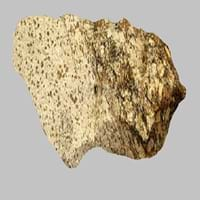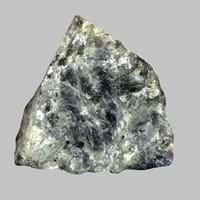Definition
Charnockite is a variety of granite containing minerals like orthopyroxene, quartz, and feldspar
Anorthosite is a granular igneous rock composed largely of labradorite or plagioclase
Origin
Tamil Nadu, India
Unknown
Discoverer
T. H. Holland
Unknown
Etymology
From Job Charnock, an administtrator of East India Company
From French anorthose plagioclase + -ite1
Class
Igneous Rocks
Igneous Rocks
Sub-Class
Durable Rock, Hard Rock
Durable Rock, Medium Hardness Rock
Other Categories
Coarse Grained Rock, Opaque Rock
Coarse Grained Rock, Opaque Rock
Texture
Granular
Foliated, Glassy
Color
Black, Grey, Orange, Pink, White
Black, Bluish - Grey, Brown, Green, Grey, Light Greenish Grey, Pink, White
Durability
Durable
Durable
Appearance
Veined or Pebbled
Layered, Banded, Veined and Shiny
Interior Uses
Bathrooms, Countertops, Decorative Aggregates, Entryways, Floor Tiles, Homes, Hotels, Kitchens, Stair Treads
Decorative Aggregates, Floor Tiles, Homes, Interior Decoration
Exterior Uses
As Building Stone, As Facing Stone, Bridges, Paving Stone, Garden Decoration, Office Buildings, Resorts
As Building Stone, As Facing Stone, Garden Decoration
Other Architectural Uses
Curbing
Curbing
Construction Industry
As Dimension Stone
As Dimension Stone, Cement Manufacture, for Road Aggregate
Medical Industry
Not Yet Used
Not Yet Used
Antiquity Uses
Artifacts, Monuments, Sculpture, Small Figurines
Artifacts, Sculpture, Small Figurines
Commercial Uses
Curling, Gemstone, Laboratory bench tops, Tombstones
Creating Artwork, Curling
Types
Enderbite
Proterozoic Anorthosite and Archean Anorthosite
Features
Available in Lots of Colors and Patterns, It is One of the Oldest, Strongest and Hardest Rock
Generally rough to touch, Is one of the oldest rock
Archaeological Significance
Monuments
Used
Not Yet Used
Famous Monuments
Data Not Available
Not Applicable
Famous Sculptures
Data Not Available
Not Applicable
Pictographs
Not Used
Not Used
Petroglyphs
Not Used
Not Used
Formation
Charnockite is an intrusive igneous rock which is very hard and is formed due to weathering of existing rocks.
Anorthosite is a phaneritic, intrusive igneous rock which is characterized by a predominance of plagioclase feldspar which is almost 90–100%, and a minimal mafic component.
Mineral Content
Amphibole, Biotite, Feldspar, Hornblade, Micas, Muscovite or Illite, Olivine, Plagioclase, Pyroxene, Quartz
Amphibole, Clinopyroxene, Ilmenite, Magnetite, Olivine, Orthopyroxene
Compound Content
Aluminium Oxide, CaO, Iron(III) Oxide, FeO, Potassium Oxide, MgO, MnO, Sodium Oxide, Phosphorus Pentoxide, Silicon Dioxide, Titanium Dioxide
Ca, CaO, Chromium(III) Oxide, MgO, Sulfur Trioxide
Types of Metamorphism
Burial Metamorphism, Contact Metamorphism, Regional Metamorphism
Cataclastic Metamorphism, Contact Metamorphism
Types of Weathering
Biological Weathering
Biological Weathering
Types of Erosion
Chemical Erosion, Water Erosion, Wind Erosion
Chemical Erosion, Wind Erosion
Grain Size
Coarse Grained
Coarse Grained
Fracture
Not Available
Irregular
Porosity
Very Less Porous
Less Porous
Luster
Not Available
Pearly to Subvitreous
Cleavage
Not Available
Irregular
Toughness
Not Available
Not Available
Specific Gravity
Not Available
2.62-2.82
Transparency
Opaque
Translucent
Density
2.6 g/cm3
2.7-4 g/cm3
Specific Heat Capacity
Not Available
Resistance
Heat Resistant, Wear Resistant
Heat Resistant, Impact Resistant, Pressure Resistant, Scratch Resistant, Wear Resistant
Deposits in Eastern Continents
Africa
East Africa, Ethiopia, Madagascar, Morocco, Mozambique
Not Yet Found
Europe
Albania, Romania, Scotland, United Kingdom
Bulgaria, France, Germany, Greece, Hungary, Italy, Latvia, Lithuania, Malta, Poland, Portugal, Romania, Slovenia, Spain, Sweden, The Czech Republic
Others
Not Yet Found
Not Yet Found
Deposits in Western Continents
South America
Brazil, Colombia, Venezuela
Bolivia, Colombia
Deposits in Oceania Continent
Australia
Central Australia, Western Australia
Central Australia, South Australia, Western Australia
All about Charnockite and Anorthosite Properties
Know all about Charnockite and Anorthosite properties here. All properties of rocks are important as they define the type of rock and its application. Charnockite and Anorthosite belong to Igneous Rocks.Texture of Charnockite is Granular whereas that of Anorthosite is Foliated, Glassy. Charnockite appears Veined or Pebbled and Anorthosite appears Layered, Banded, Veined and Shiny. The luster of Charnockite is not available while that of Anorthosite is pearly to subvitreous. Charnockite is available in black, grey, orange, pink, white colors whereas Anorthosite is available in black, bluish - grey, brown, green, grey, light greenish grey, pink, white colors. The commercial uses of Charnockite are curling, gemstone, laboratory bench tops, tombstones and that of Anorthosite are creating artwork, curling.










